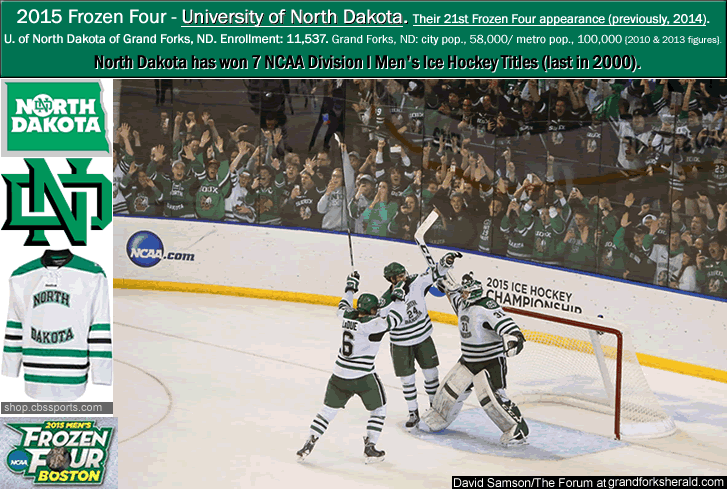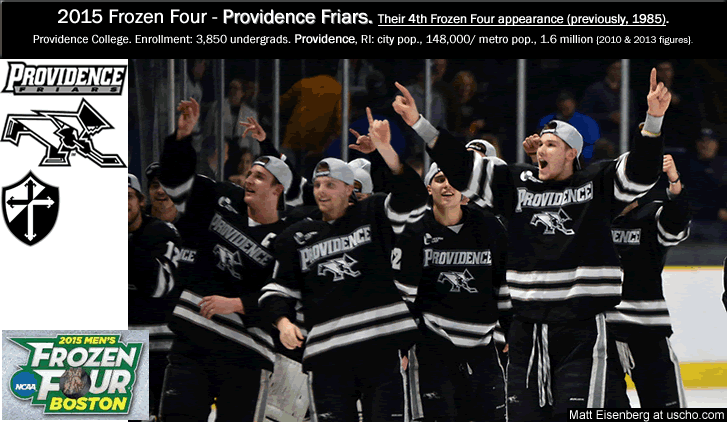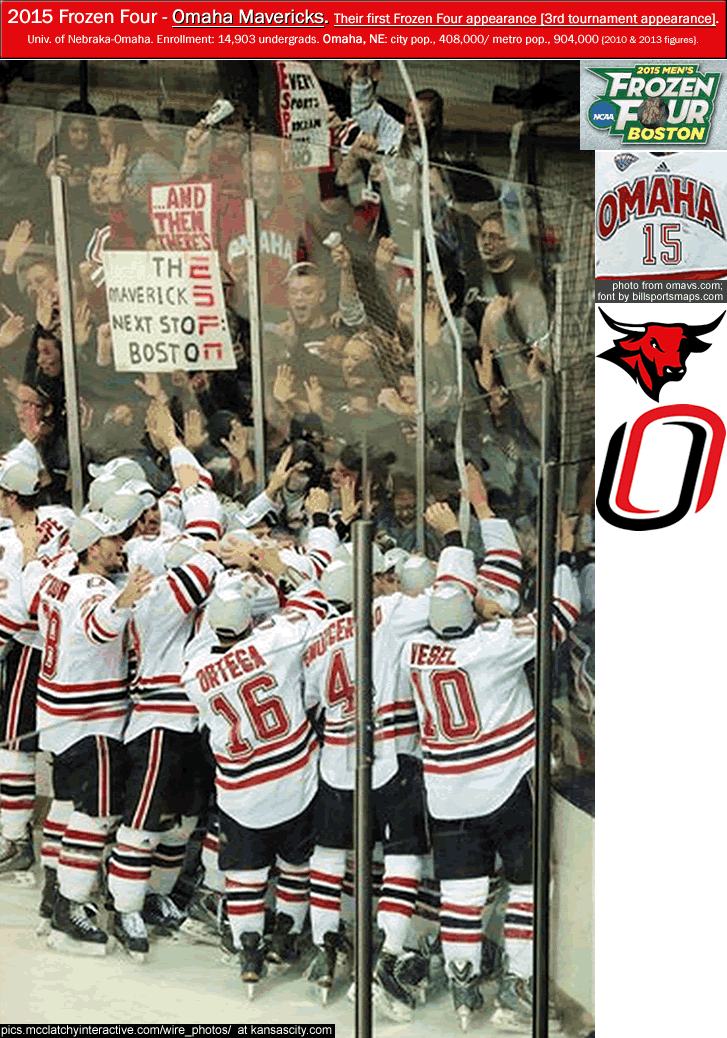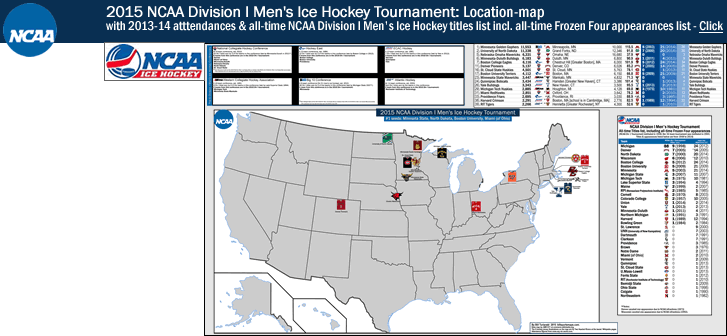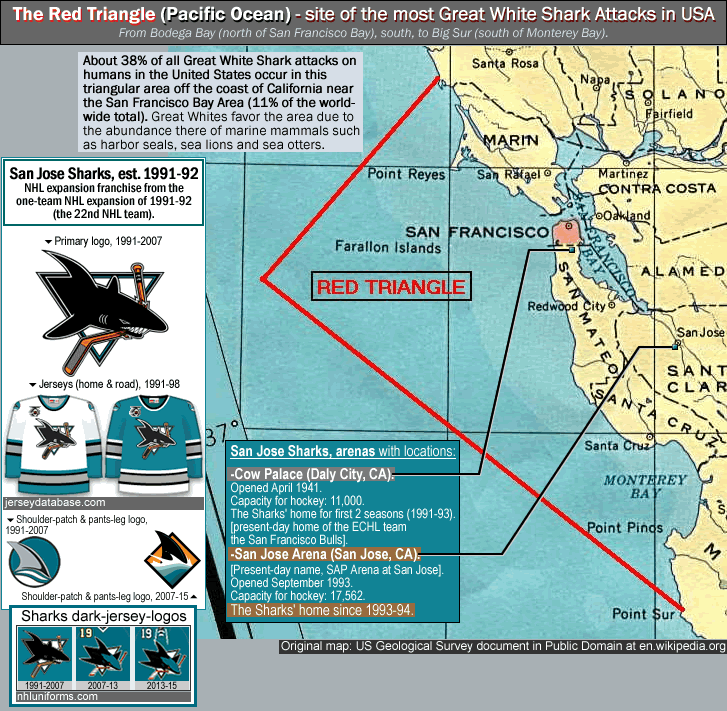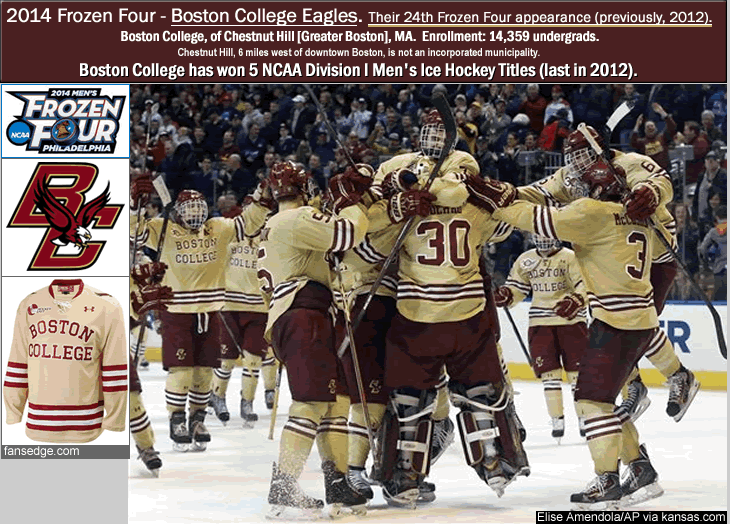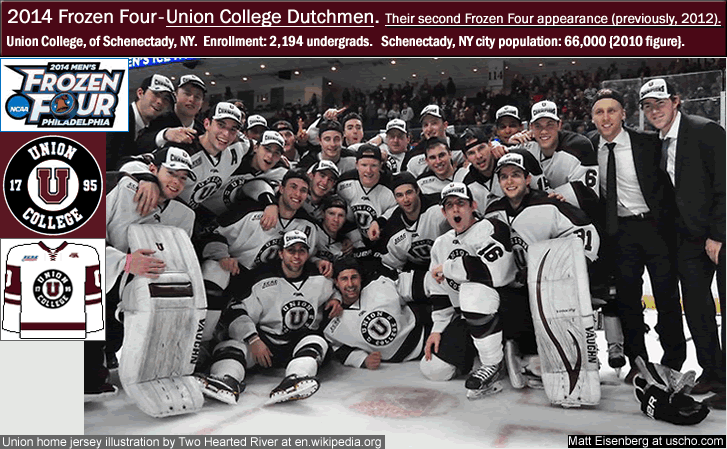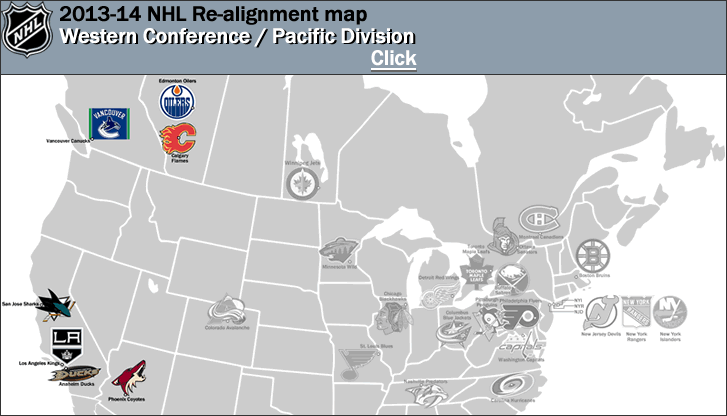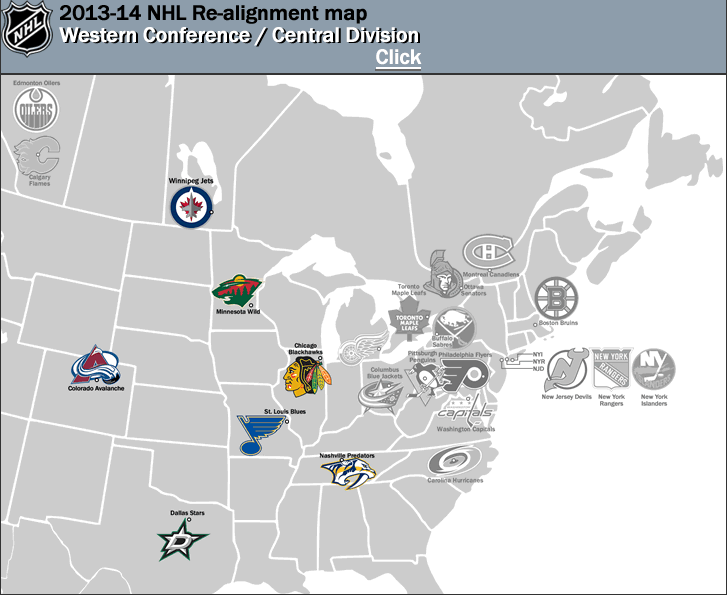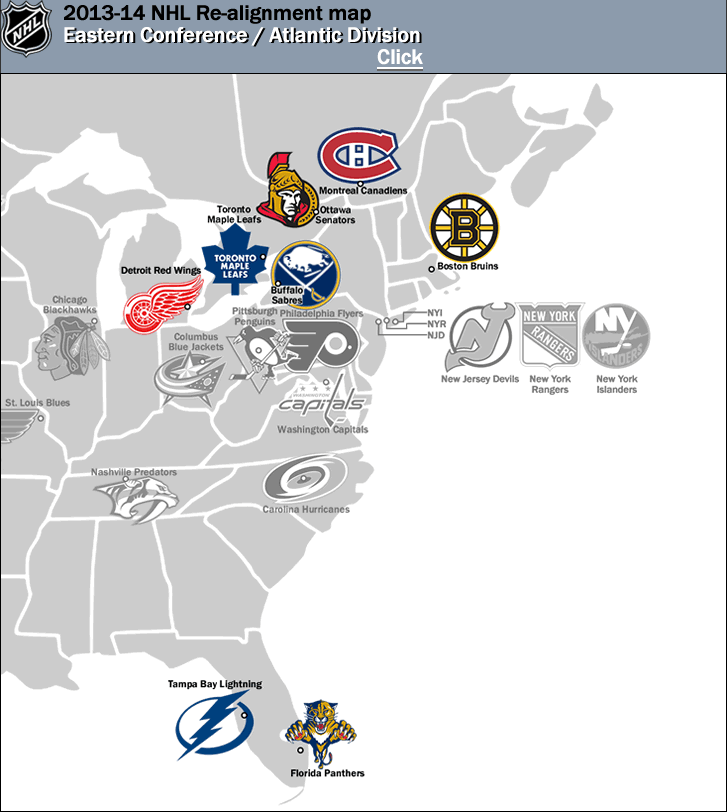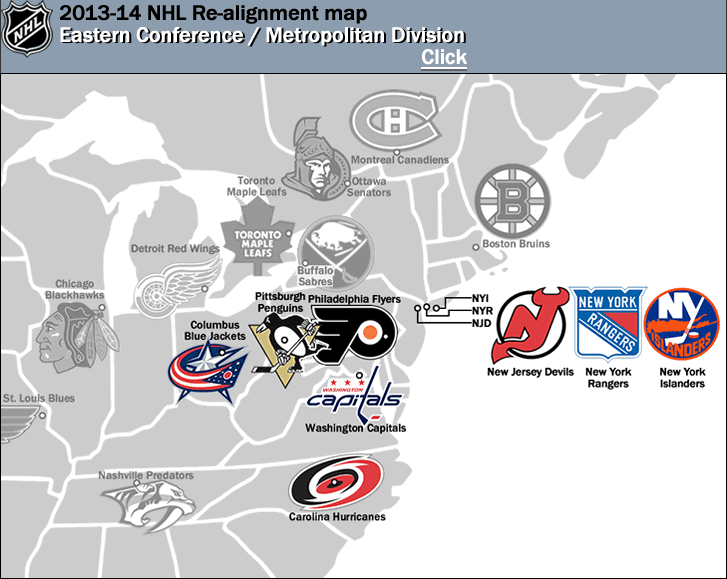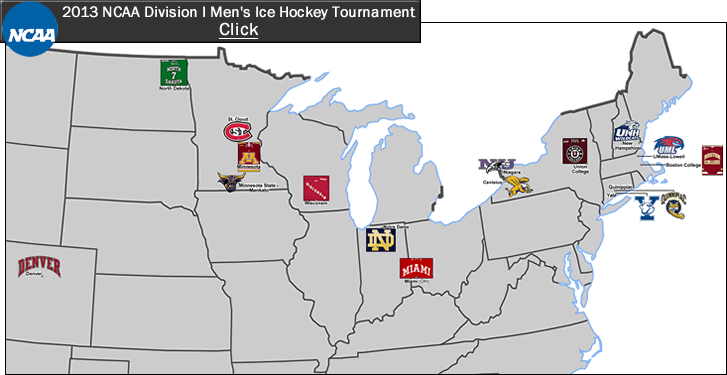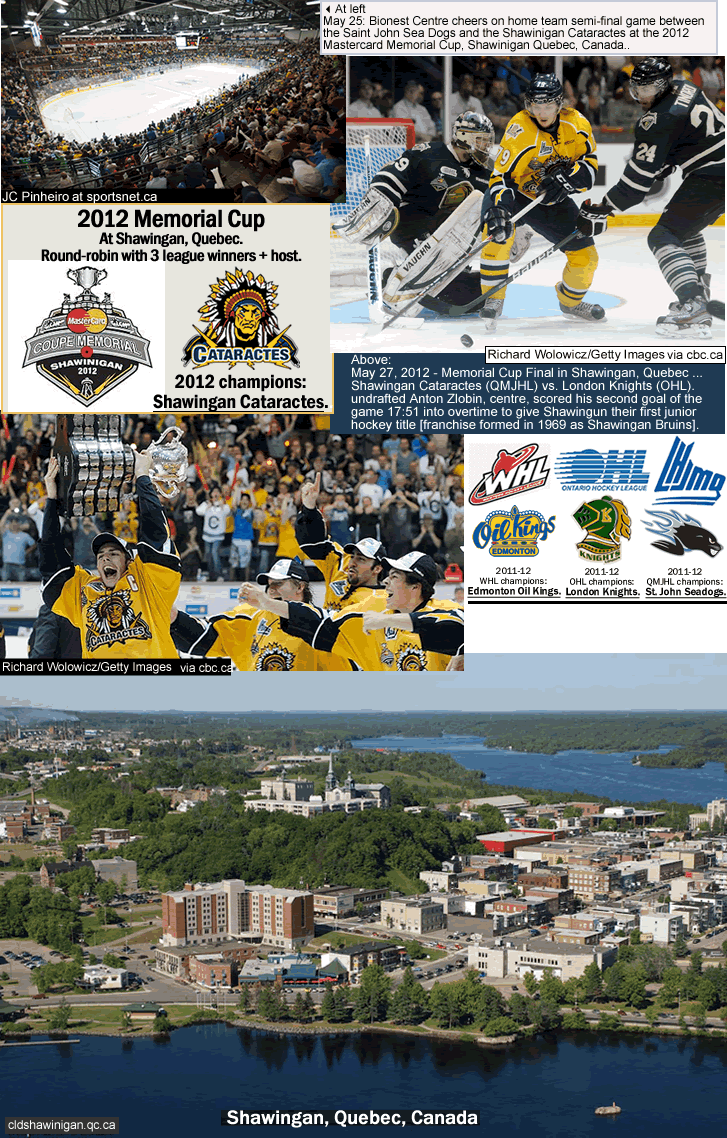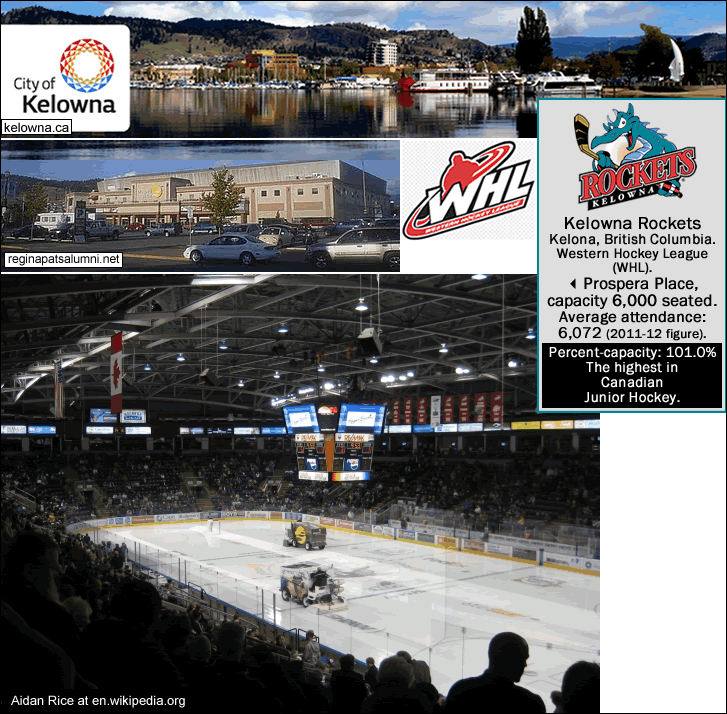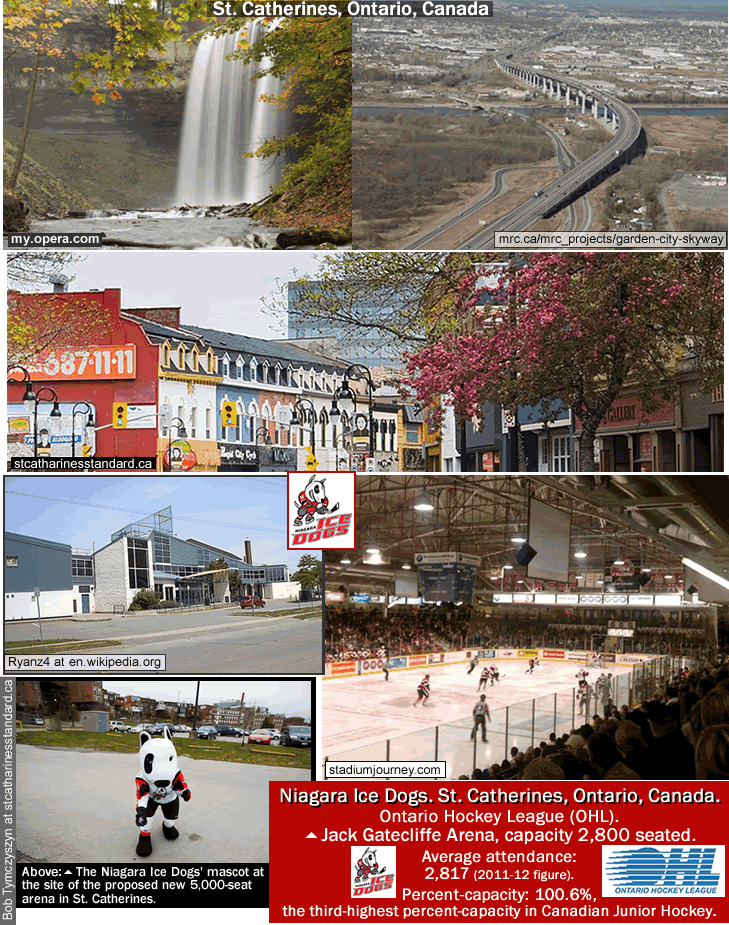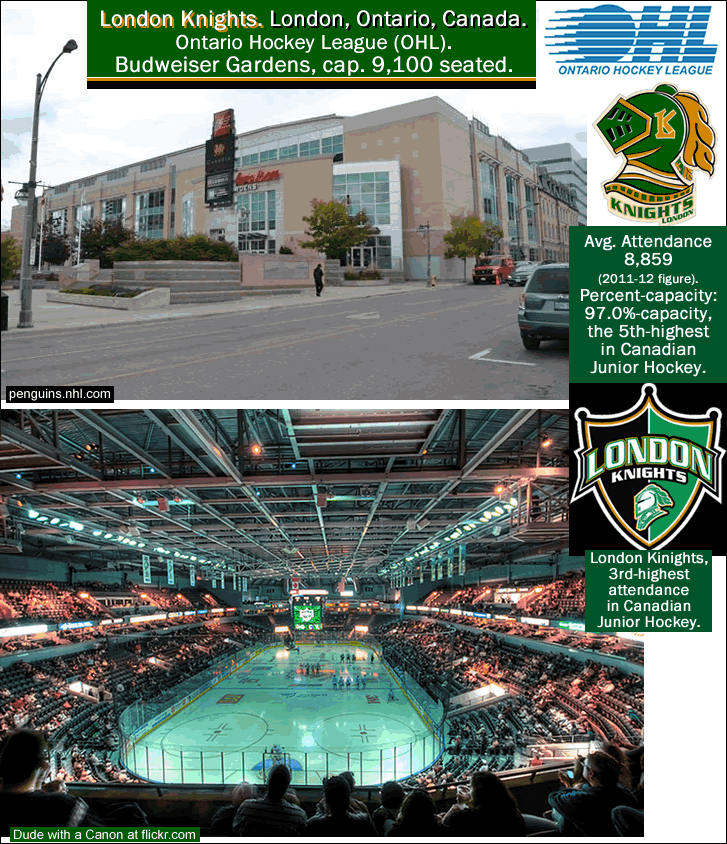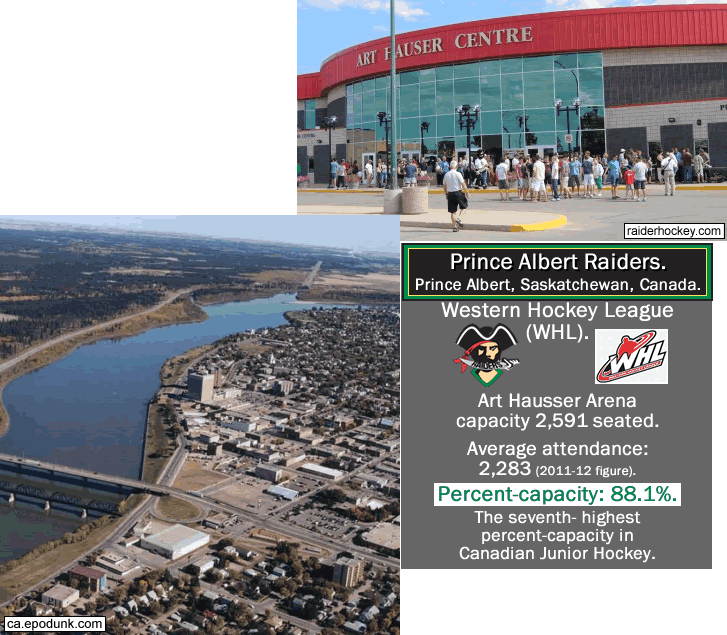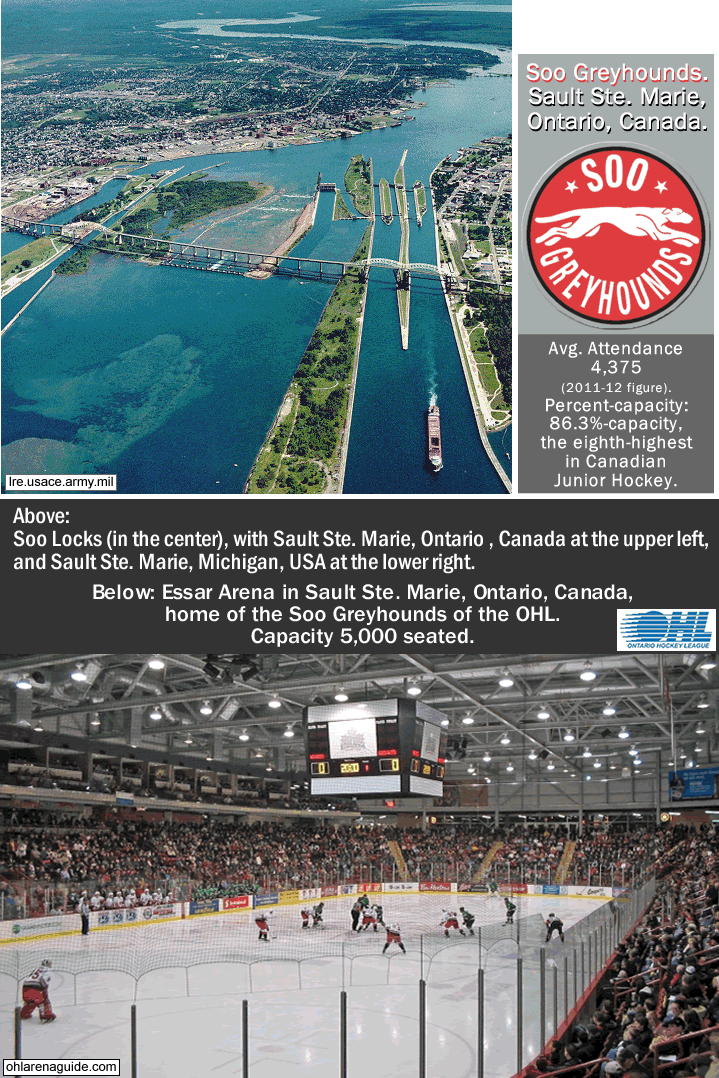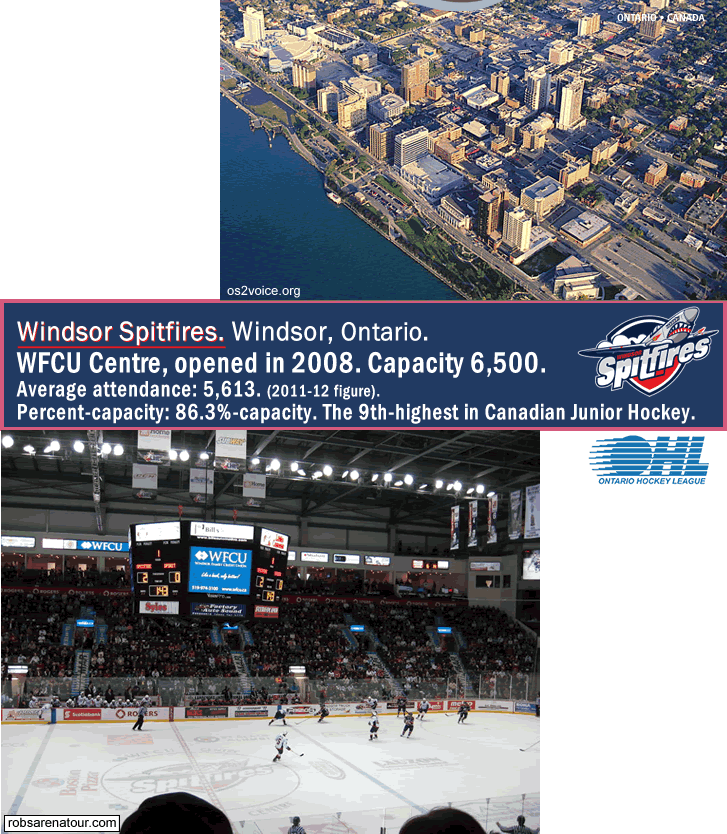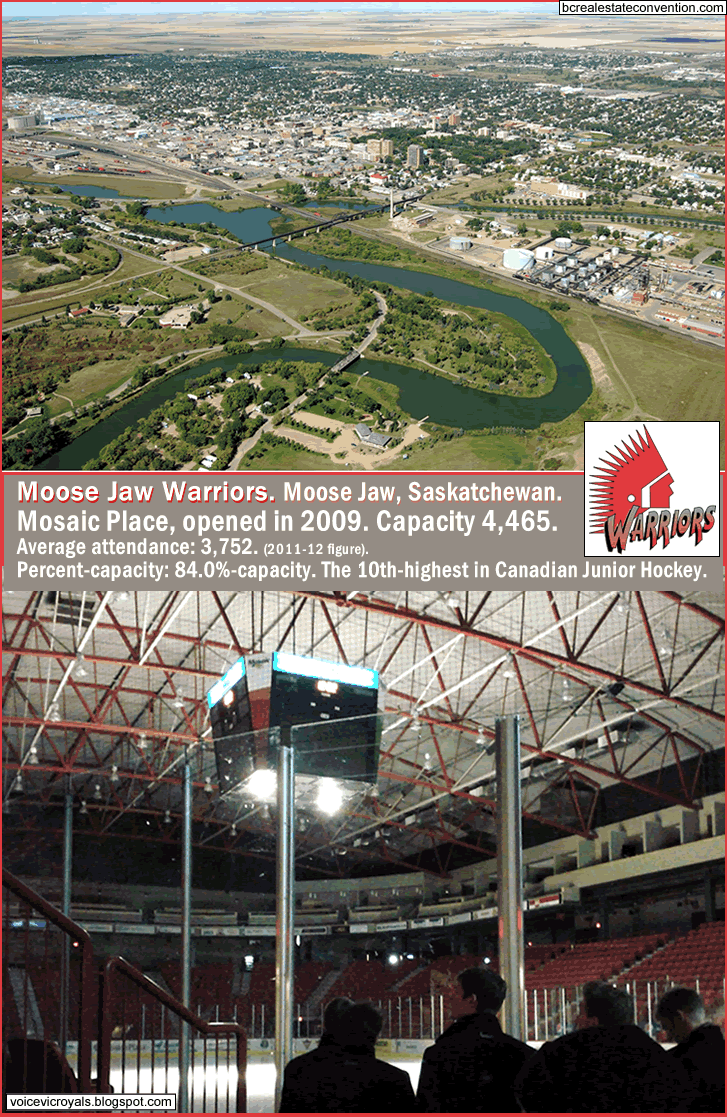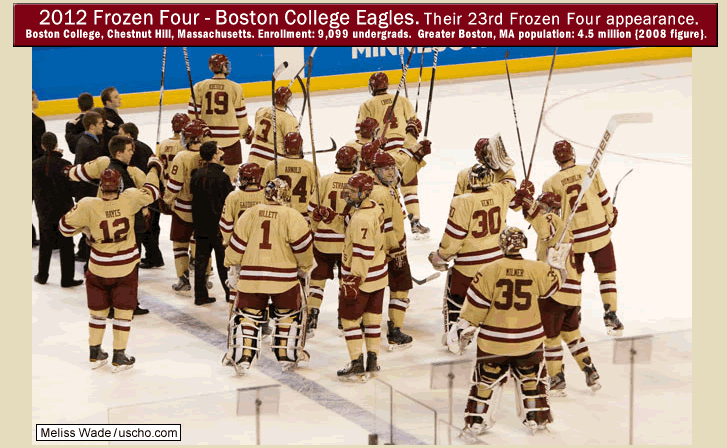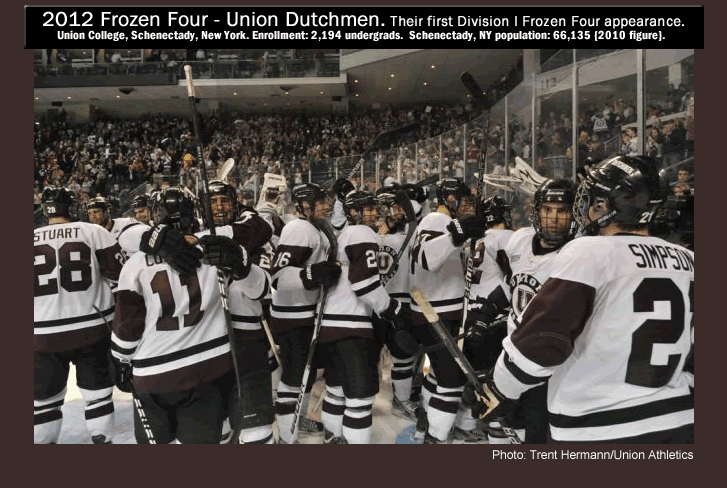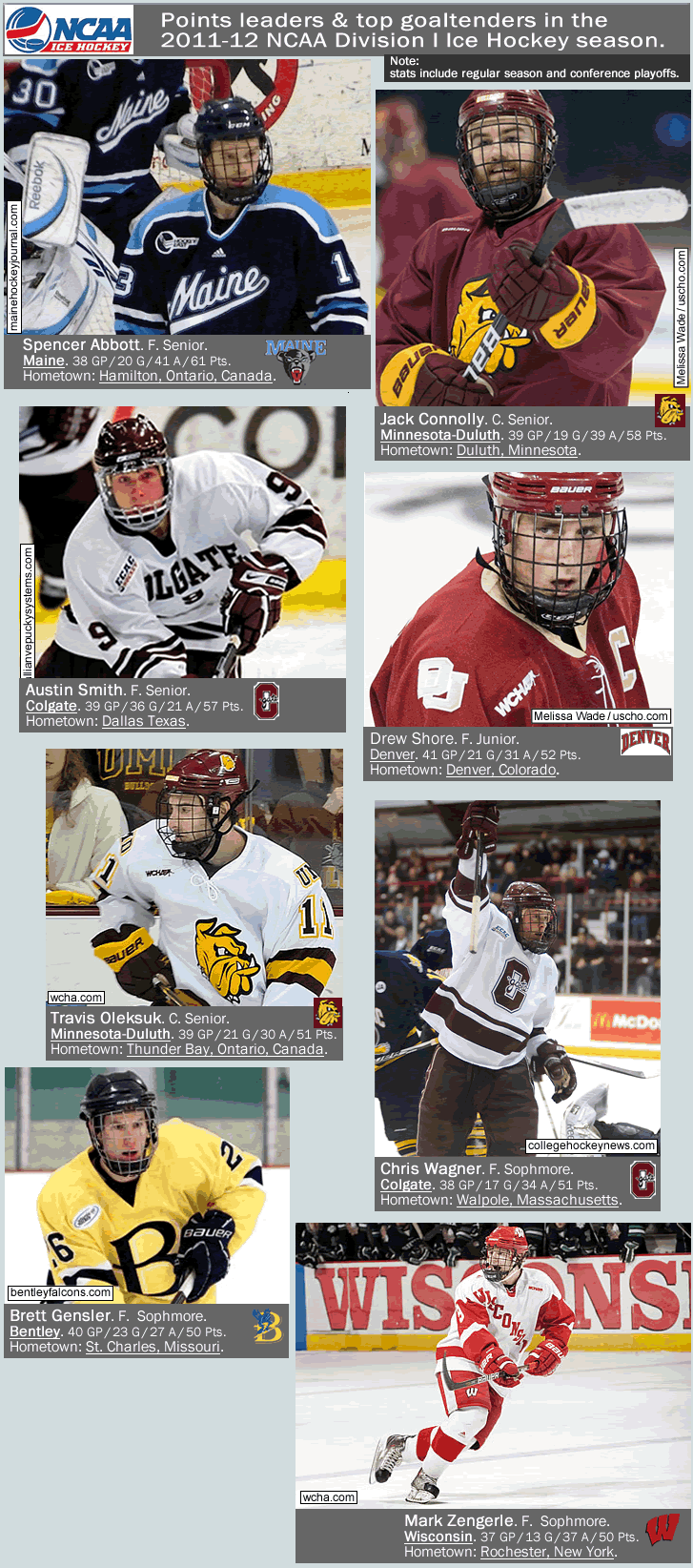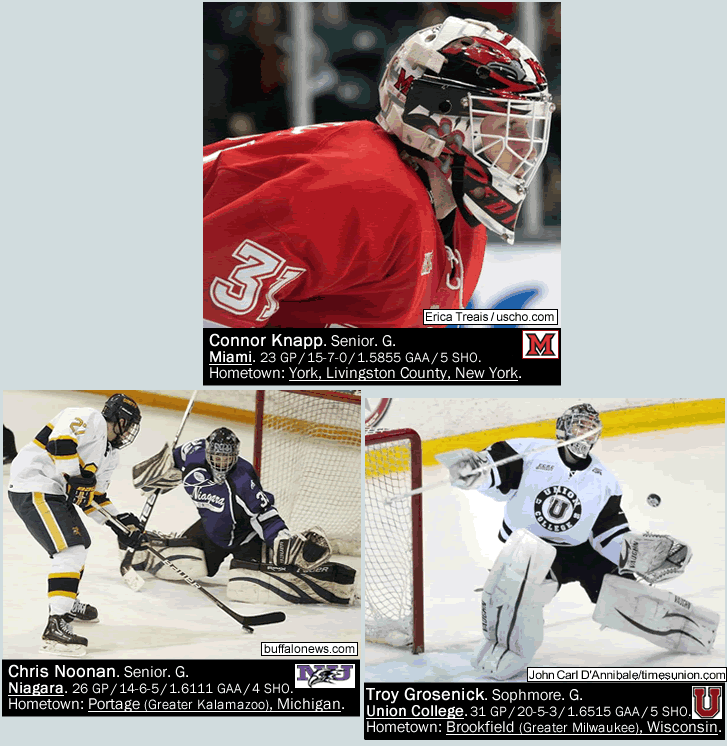Brand-new post…2017 Memorial Cup, here:
2017 CHL Memorial Cup tournament (in Windsor, Ontario/ May 19 to May 28) – the 4 teams: Windsor Spitfires (host team), Erie Otters (OHL), Saint John Sea Dogs (QMJHL), Seattle Thunderbirds (WHL): photo-illustrations with standout players in 2016-17.
…
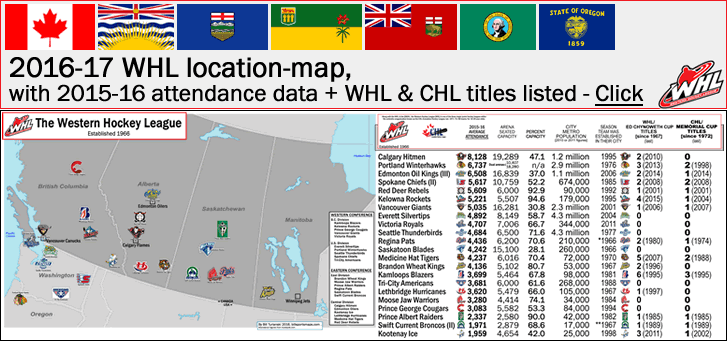
Western Hockey League (WHL): location-map with: 2015-16 attendance data, WHL titles & CHL/Memorial Cup titles listed
…
…
By Bill Turianski on 13 April 2016; twitter.com/billsportsmaps.
Links…
-Teams, etc…Western Hockey League (en.wikipedia.org).
-Official site…whl.ca.
-2016 CHL Memorial Cup tournament… 2016 Memorial Cup (en.wikipedia.org).
50th Anniversary Official All-time Greatest WHL players (voted on by fans, at official WHL site)…WHL Top 50 Players of All-Time Countdown Concludes
#1, Joe Sakic (Swift Current Broncos, 1986-88). #2: Bobby Clarke (Flin Flon Bombers, 1967-69). #3, Carey Price (Tri-City Americans, 2003-07).
-2015-16 WHL attendances… Western Hockey League 2015-16 Attendance Graph (hockeydb.com).
-My recently-posted map-and-post on the Ontario Hockey League…Ontario Hockey League (OHL): location-map with: 2015-16 attendance data, OHL titles & CHL/Memorial Cup titles listed/+ illustrations for the 6 OHL teams with the best-percent-capacity figures in 2015-16 (Oshawa Generals, London Knights, Kitchener Rangers, Barrie Colts, Guelph Storm, Niagara IceDogs).
-My recently-posted map-and-post on the Quebec Major Junior Hockey League…Ligue de Hockey Junior Majeur du Québec (LHJMQ) [English: Quebec Major Junior Hockey League (QMJHL)]: location-map with: 2015-16 attendance data, QMJHL titles & CHL/Memorial Cup titles listed/+ illustrations for the 2 QMJHL teams with the best attendance in 2015-16 (the Quebec Remparts & the Halifax Mooseheads), and the 2 QMJHL teams with the best-percent-capacity figures in 2015-16 (the Rouyn-Noranda Huskies & the Val-d’Or Foreurs).
-My 2012 map-&-post on major junior hockey in Canada (CHL) from November 2012…Canadian Hockey League: location maps for WHL, OHL, and QMJHL teams (60 teams) and 2011-12 attendance data. Plus the top 3 highest drawing teams, the top 10-highest percent-capacities….
…
Western Hockey League, established 1966-67
Below, a map of the first season of the WHL (1966-67 CMJHL [WHL]/ 7 teams), which features the 1967 champions, the Moose Jaw Canucks. The map below also features 6 present-day franchises (see small text above map for franchise-histories) – including 2 founding-members-of-the-WHL (the present-day-WHL-teams the Regina Pats and the Saskatoon Blades), as well as 4 charter-franchises-of-the-WHL (those 4 WHL franchises now located in the present-day WHL cities of Calgary, Edmonton, Kamloops, and Moose Jaw)…
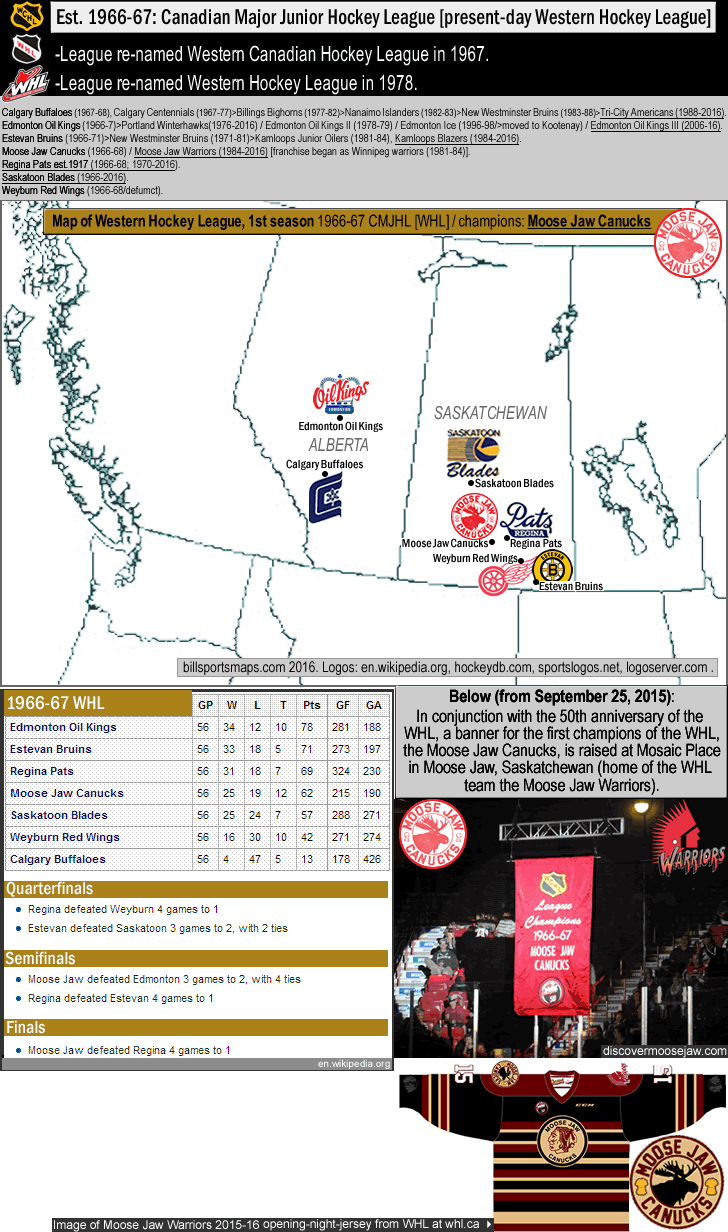
Logos in map above from: en.wiipedia.org/Western Hockey League / 1966-67 CMJHL [WHL], hockeydb.com/Logos, sportslogos.net/WHL. logoserver.com/Western CHL. Photo of Moose Jaw Canucks 1966-67 champions banner raised to the rafters of Mosaic Place, photo unattributed at discovermoosejaw.com/lmoose-jaw-hockey-history-honoured. Image of Moose Jaw Warriors 2015-16 opening-night-jersey from WHL at whl.ca/warriors-unveil-opening-night-jersey.
…
The Western Hockey League (WHL) is one of three Canadian major junior hockey leagues…
The Western Hockey League (WHL) is one of three Canadian major junior hockey leagues, along with the Ontario Hockey League (OHL) and the Quebec Major Junior Hockey League (QMJHL). Since 1971-72, the 3 leagues have sent their league-champion to compete for the Memorial Cup title. Since 1975-76, the 3 leagues together comprise the Canadian Hockey League (CHL). The 3 CHL leagues are for players aged 16 to 20 – there are no restrictions for the amount of USA-born players on each team; however, non-Canadian-&-American players (ie, European and Russian players) are restricted to 2 per team roster. The 3 leagues of the CHL are quite a big deal, because approximately 54% of all NHL players, currently, were drafted from either the OHL, the WHL, or the QMJHL. {Citation: see 2nd paragraph, here [Ontario Hockey League page at en.wikipedia.org].}
Click on image below for:
Location-map of all the teams in the 3 leagues which comprise the Canadian Hockey League (CHL/60 teams)…
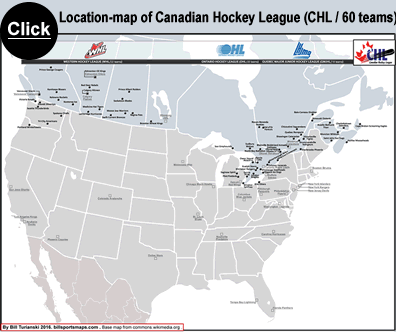
The CHL is an umbrella-organization for the 3 leagues; there is no inter-league play except for the post-season tournament…the CHL has a four-team playoff tournament – the Memorial Cup, which is played at a different host-city each May. (Note: see 5 paragraphs futher below for more info about the Memorial Cup.)
…
On the map page…
The map page shows the locations (and the logos) of the 22 WHL teams – 6 of which are in the Canadian province of British Columbia, 5 of which are in the Canadian province of Alberta, 5 of which are in the Canadian province of Saskatchewan, one of which is in the Canadian province of Manitoba, and 5 of which are USA-based: 4 from the state of Washington and 1 from the state of Oregon. The locations of all the NHL teams from the Western Canada/USA region are also shown on the map (ie, the 4 Western Canadian NHL teams).
On the right-hand-side of the map page is a chart for the WHL which shows 7 things…
1). 2015-16 average attendances of the 22 WHL teams, ranked {source: Western Hockey League 2015-16 Attendance Graph (hockeydb.com)}.
2). Home arena seated capacity of the 22 WHL teams.
3). Percent-capacity for each team in 2015-16 [Percent Capacity equals Average Attendance divided by Arena-seated-capacity] (ie, how well the team fills its arena).
4). Metropolitan-area population of each team’s home-city; or, as with the Swift Current Broncos, the team’s home-town…the metro-area population of Swift Current, Saskatchewan is ~17,500. {Sources: List of census metropolitan areas and agglomerations in Canada [2011 census figures]; USA-based-teams: List of metropolitan areas of the United States (en.wikipedia.org).}
5). Season the WHL team began play in its home-city. (Note: for extra details about the first-WHL-seasons of the Regina and Swift Current teams, see boxes below chart.)
6).WHL titles (and the year of last title/ since 1966-67). {WHL titles: Ed Chynoweth Cup (en.wikipedia.org).}
7). CHL/Memorial Cup titles (and the year of last title/ since 1971-72) [/ see notes below]. {Memorial Cup/CHL titles: List of Memorial Cup champions (en.wikipedia.org).}
Notes on the Memorial Cup title / CHL title…
The Memorial Cup was instituted in 1919, and was named in remembrance of the Canadians who died in the Great War (World War I). From 1919 to 1971, the Cup was contested between 2 teams: the best junior team each season from Eastern Canada versus the best junior team from Western Canada. (The winner won that season’s Memorial Cup title.) The current format of the Memorial Cup tournament dates to 1971-72, when a 3-team playoff tournament was created. The tournament at that point [1972] involved the champion from each of the 3 leagues:
•The-long-established-[1933]-and-now-20-team OHL.
•The-established-in-1966-and-now-22-team-WHL.
•The-then-newly-established-[1971]-and-now-18-team-QMJHL.
4 years later [1975], the arrangement was formalized with the institution of the Canadian Hockey League – which, again, is the governing body of the OHL/WHL/QMJHL. In 1982-83, the Memorial Cup tournament was expanded to a 4th team, with the host-city’s team given a place in the competition. (There is a different host-city for the Memorial Cup each May.) Currently, the 60 teams in the CHL (from the 3 member-leagues), which hail from 9 Canadian provinces and 4 American states, compete for the chance to qualify for the Memorial Cup tournament and win the Memorial Cup title/CHL title.
Red Deer, Alberta will host the 2016 Memorial Cup…
2016 Memorial Cup (en.wikipedia.org).
The 2016 Memorial Cup tournament will be held at the 6,000-capacity ENMAX Centrium in Red Deer, Alberta, with the WHL’s Red Deer Rebels the host-team. The tournament will run from May 19th to May 29th, 2016. (Note: within the Red Deer Rebels illustration further below, you can read a short paragraph about the etymology and early history of Red Deer, Alberta, and its location with respect to Edmonton & Calgary.)
…
List of Memorial Cup champions (en.wikipedia.org).
WHL teams that have won Memorial Cup/CHL titles (1972-2016)
1974: Regina Pats
1977: New Westminster Bruins
1978: New Westminster Bruins
1983: Portland Winter Hawks
1985: Prince Albert Raiders
1987: Medicine Hat Tigers
1988: Medicine Hat Tigers
1989: Swift Current Broncos
1991: Spokane Chiefs
1992: Kamloops Blazers
1994: Kamloops Blazers
1995: Kamloops Blazers
1998: Portland Winter Hawks
2001: Red Deer Rebels
2002: Kootenay Ice
2004: Kelowna Rockets
2007: Vancouver Giants
2008: Spokane Chiefs
2014: Edmonton Oil Kings
…
-
Below: the 4 best-drawing teams in the 2015-16 WHL (Calgary Hitmen, Portland Winterhawks, Edmonton Oil Kings, Spokane Chiefs),
and the 3 teams that filled their arenas the best (Kelowna Rockets, Red Deer Rebels, Prince Albert Raiders)…
Calgary Hitmen: Best attendance in the WHL in 2015-16, at 8,217 per game

Photo and Image credits above -
Jersey illustrations by sportslogos.net/Calgary Hitmen. Aerial view of Greater Calgary in winter-time with Canadian Rockies in the background, photo by reddit.com/user/thelonelyYOTTABYTE at The 27 most beautiful photos of Canada uploaded to Reddit. Aerial view of downtown Calgary, photo unattributed at canadian-wellsite.com/images/Calgary. View of downtown Calgary in winter, photo by theconstantrambler.com at theconstantrambler.com. Exterior shot of the Saddledome, photo unattributed at static.gofansgo.com/images/Saddledome. Shot of Saddledome at night, photo by Rob Moses Photography at robmosesphotography.com Shot of fans at Saddledome cheering on the tunnel entrance of the Calgary Hitmen, photo by twitter.com/WHLHitmen/media. Shot of fans in front rows cheering after a goal with celebrating Hitmen clustered before them, photo by facebook.com/HitmenHockey/photos_stream. Original logos (1995) images from File:Hitmenlogos.png. 2015-16 Calgary Hitmen 20th anniversary black-silver-pink jersey, photo by Calgary Hitmen at hitmenhockey.com
…
Portland Winterhawks: 2nd-best attendance in the WHL in 2015-16, at 7,004 per game

Photo and Image credits above –
Jersey illustrations by sportslogos.net/Portland Winterhawks. Downtown Portland, OR at night, photo unattributed at portland2016.com. Portland, OR winter scene of skyline, photo unattributed at portlandloftscondos.com/portland-oregon-winter Aerial shot of Veterans Memorial Coliseum and the Moda Center, photo by Mike Brewington at brewsphoto.com, here. Street-level-view of the Vet and Moda Center, photo by Jonathan House at Portland Tribune, at pamplinmedia.com/memorial-coliseum-money-pit. 1st-period-faceoff shot at the Moda Center, photo by @roncallan via emeraldcitysportsblogs.wordpress.com. Winterhawks fans celebrate a goal versus Seattle {april 2015], photo by Kent Frasure at portlandtribune.com/sports.
…
Edmonton Oil Kings: 3rd-best attendance in the WHL in 2015-16, at 6,838 per game

Photo and Image credits above –
Jersey illustrations by sportslogos.net/Edmonton Oil Kings.. Edmonton skyline, photo by WinterE229 (WinterforceMedia) at File:Downtown-Skyline-Edmonton-Alberta-Canada-01A.jpg (commons.wikimedia.org). Winter scene with tobogganners and view of Edmonton skyline, photo by Edmonton Tourism at uofainsideout.ca. View of Edmonton skyline on a winter night, photo by Lumens Borealis at lumensborealis.com. Shot of Rexall Place at night, photo by Heimo Kramer at sanjogonline.blogspot.com. 1963 Memorial Cup champions the Edmonton Oil Kings (I) (1951-76): 1962-63 game-worn jersey, photo by classicauctions.net. Oil Kings black/green-alternate-home-jersey & shoulder-patch logo, photos from ebay.com/edmonton-oil-kings. Shot of Oil Kings game from the stands at Rexall Place, photo by Codie McLachlan/Edmonton Sun/QMI Agency at sunmediaphotos.photoshelter.com. 2014 Oil Kings squad with banners and trophies on Banner Night in Edmonton, photo by David Bloom/Edmonton Sun/QMI Age at edmontonsun.com/2014/09/21/jones-warm-glow-for-oil-kings-banner-raising.
…
Spokane Chiefs: 4th-best attendance in the WHL in 2015-16, at 5,765 per game

Photo and Image credits above -
Jersey illustrations by sportslogos.net/Spokane Chiefs. Aerial view of Spokane, photo unattributed at carousels.org/Spokane2010. Spokane Falls, photo by Steven Lamar at flickr.com. Exterior shot of Spokane Veterans Memorial Arena, photo by Jdubman at File:SpokaneArenaSECorner.jpg (commons.wikimedia.org). Chiefs fans cheer after goals at the Spokane Veterans Memorial Arena (Oct. 2011) by Dan Pelle/The Spokesman-Review at spokesman.com/galleries/2011/oct. Shot of Chiefs squad before the first outdoor game in WHL, Jan.15 2011: at Avista ballpark in Spokane, WA (Spokane Chiefs 11, Kelowna Rockets 2), photo by Jessee Tinsley at spokesman.com/nachbaur-whl-coach-year.
…
Kelowna Rockets: 5th-best attendance in the WHL in 2015-16, at 5,242 per game + Best at filling their arena in 2015-16, at 95.1 percent-capacity
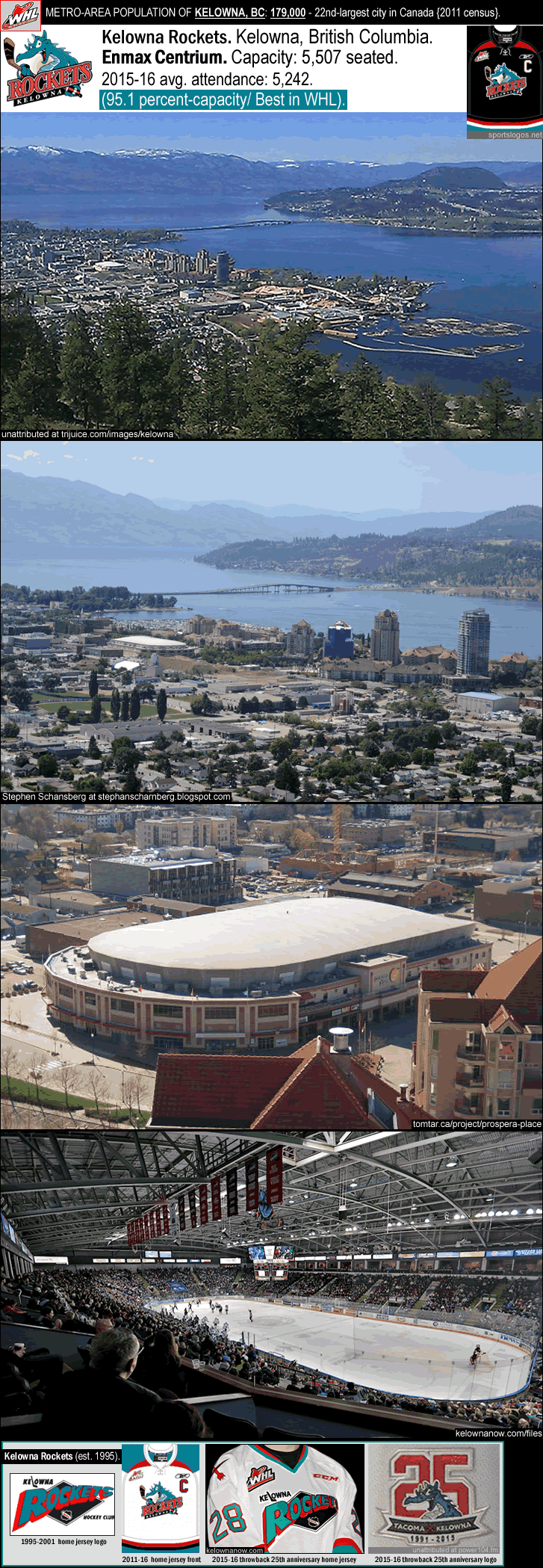
Photo and Image credits above –
Jersey illustrations by sportslogos.net/Kelowna Rockets. Aerial view of Kelown, photo unattributed at trijuice.com/images/kelowna. Kelowna looking towards downtown, photo by stephanscharnberg.blogspot.com. Exterior shot of Prospera Place, photo by Tomtar.ca External Sheeting and Roofing. Interior of Prospero Place during a Rockets’ matinee game, photo by kelownanow.com/files. Kelowna 25th anniversary home alternate jersey (throwback), photo by kelownanow.com/Kelowna_Rockets_Reveal_25th_Anniversary_Jerseys. Kelowna Rockets 25th Anniversary patch, photo unattributed at power104.fm/powerpatrol/2015/08/24/.
…
Red Deer Rebels: 2nd-best at filling their arena in the WHL in 2015-16, at 93.9 percent-capacity
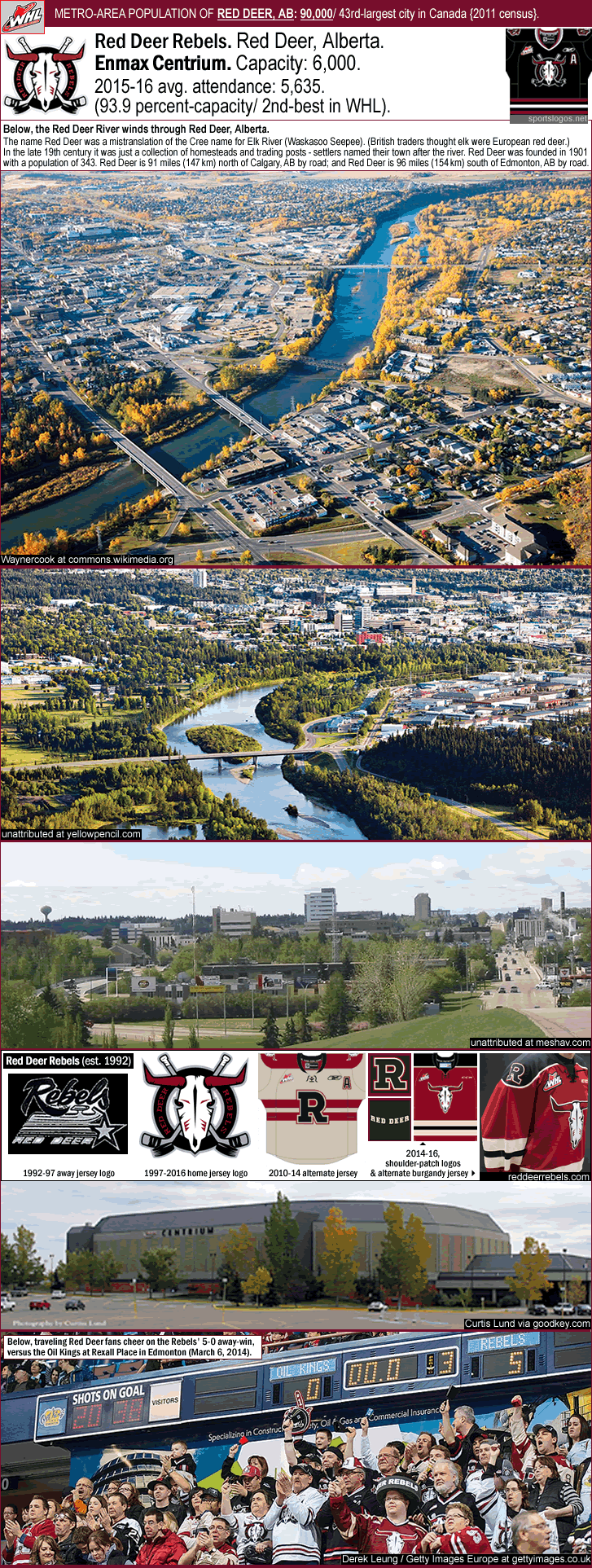
Photo and Image credits above -
Jersey illustration by sportslogos.net/Red Deer Rebels. Aerial view of Red Deer, photo by Waynercook at File:Red Deer – Aerial – downtown bridges.jpg (commons.wikimedia.org). Aerial view of Red Deer Alberta in summer, photo unattributed at yellowpencil.com/reddeer-aerial.jpg. View of Red Deer in summertime, photo unattributed at meshav.com. Red Deer Rebels 2014-15 alternate burgundy jersey & R and RED DEER shoulder-patch logos, photos from reddeerrebels.com/article/back-in-burgandy-rebels-unveil-third-jersey. Exterior shot of Enmax Centrium, photo by Curtis Lund via goodkey.com. Shot of traveling Red Deer fans cheering on the Rebels’ 5-0 away-win versus the Oil Kings at Rexall Place in Edmonton on March 6, 2014. photo by Derek Leung at gettyimages.co.uk.
…
Prince Albert Raiders: 3rd-best percent capacity in the WHL in 2015-16, at 91.8
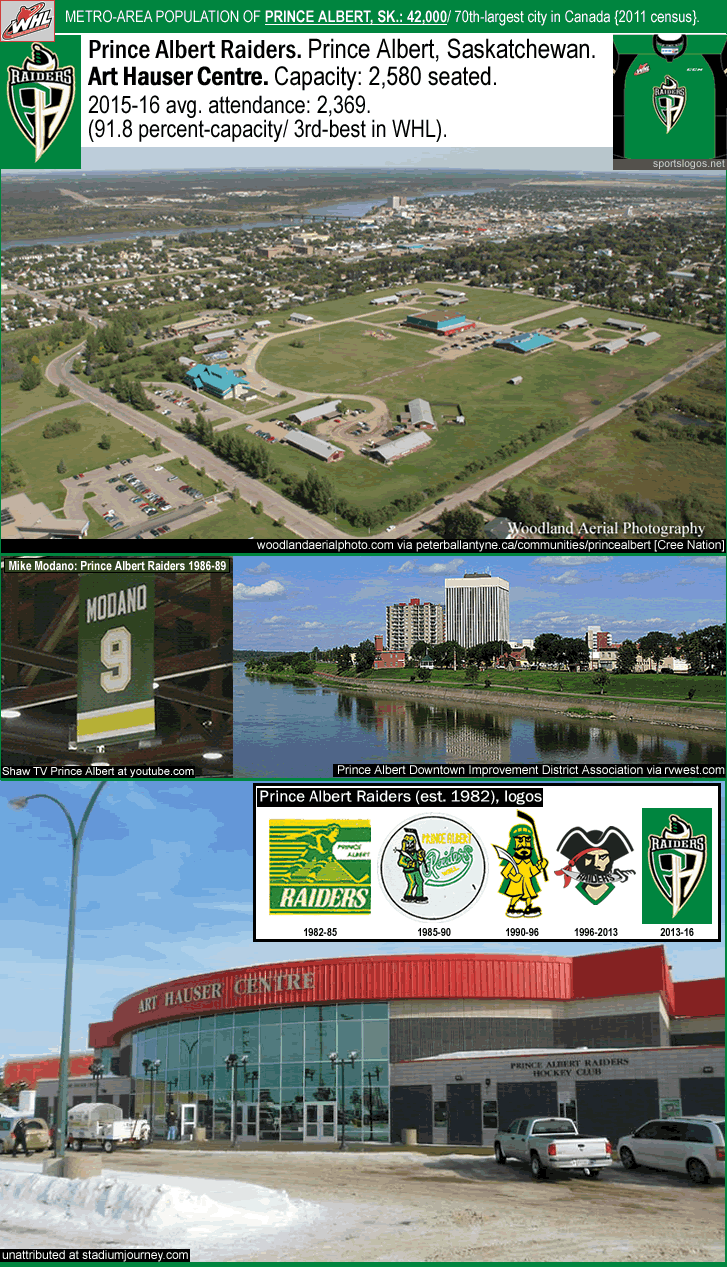
Photo and Image credits above –
Jersey illustration by sportslogos.net/Prince Albert Raiders. Aerial photo of Prince Albert, Saskatchewan, photo by Woodland Aerial Photo via peterballantyne.ca/communities/princealbert [Cree Nation]. View of PA skyline from North Saskatchewan River, photo by Prince Albert Downtown Improvement District Association via rvwest.com/prince_albert. Exterior shot of Art Hauser Centre unattributed at stadiumjourney.com. Mike Modano’s Prince Albert Raiders retired jersey-number (#9), image from screenshot of video downloaded by Shaw TV Prince Albert at youtube.com. Logos from sportslogos.net/Western_Hockey_League.
___
Thanks to all at the following links,
Sources for titles: WHL titles: Ed Chynoweth Cup ; CHL titles: List of Memorial Cup champions (en.wikipedia.org).
-Thanks to the contributors at Western Hockey League (en.wikipedia.org).
-A big thank you to Hockey Database site, for the hard-to-find WHL attendance figures (nobody wants to bother hunting down and compiling them, I guess), at Western Hockey League 2015-16 Attendance Graph.

